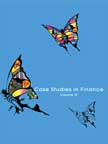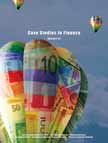Commercial Paper Market in India
|
|
ICMR HOME | Case Studies Collection
Case Details:
Case Code : FINC070
Case Length : 21 pages
Period : 2009-2010
Pub. Date : 2011
Teaching Note : Available
Organization : Financial Market
Industry : Financial Market
Countries : India
To download Commercial Paper Market in India case study (Case Code:
FINC070) click on the button below, and select the case from the list of available cases:


Price:
For delivery in electronic format: Rs. 300;
For delivery through courier (within India): Rs. 300 + Rs. 25 for Shipping &
Handling Charges
» Finance Case
Studies
» Short Case Studies
» View Detailed Pricing Info
» How To Order This Case
» Business Case Studies
» Area Specific Case Studies
» Industry Wise Case Studies
» Company Wise Case Studies
Please note:
This case study was compiled from published sources, and is intended to be used as a basis for class discussion. It is not intended to illustrate either effective or ineffective handling of a management situation. Nor is it a primary information source.
Chat with us

Please leave your feedback

|
|




<< Previous
Introduction cont...
|
The banking system had earlier been using the Prime Lending Rate (PLR)5 for the best rated customers. Borrowers often took undue advantage of the system and took loans for short-term periods at a minimal rate of interest. This led to a situation where the banks were forced to quote competitive, lower rates of interest to retain customers. This posed a serious threat to the profitability of the banks. Subsequently, RBI introduced the “Benchmark Prime Lending Rate System” (BPLR) in place of PLR. It made banks quote BPLR, based on its affordability of credit. The BPLR was arrived at after taking into account four important components like average cost of deposits, operating expenses, probable loan losses, and a
|

|
profit margin. Despite these guidelines, the bargaining power of the well-rated borrower forced banks to quote sub-PLR/BPLR rates, to withstand the competition. About 70% of loans to well-rated companies were estimated to have been sanctioned at below PLR/BPLR rates. These practices were cutting into the profit of the banks. Keeping this in view, RBI advised the banks to quote a base rate and to not finance any borrower below this rate. From the month of July 2010, the banks were not allowed to lend below the base rate. Since July 2010, the base rates quoted by the banks were in the range 8.5% to 9.5%. Hence, companies found it difficult to raise credit facilities at a lower rate of interest through the banking system. Commercial Paper appeared to be a better alternate source of finance.
Alpana Dave, Assistant vice president at Edelweiss Securities Ltd6 , commented, “There is enough demand from investors for commercial papers and expected NBFCs to raise more money through commercial papers than other companies. Such companies are likely to issue more paper than other companies because they need money for their lending business.” The CPs market, till 2007, did not show significant growth for two main reasons.
Excerpts
- Next Page>>

|
|










